
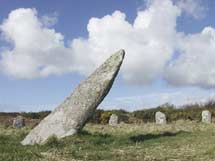 'Boscawen-un' is a prehistoric
stone circle, which was first recorded in 1582.
'Boscawen-un' is a prehistoric
stone circle, which was first recorded in 1582.
Of the 19 outer stones, 18 are granite and the remaining stone is quartz - can you find it?
You can ask for more information in the farmhouse.
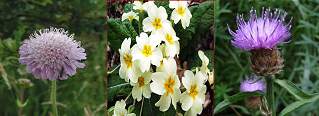 |
||
|
Hedge plants you might see on your walk
At Trelew Farm, look out for the following plants in the hedges:
|
||
|
These are the sorts of birds you might see around the farm: |
||
|
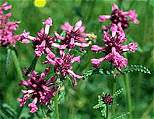 Cornish Hedges
Cornish Hedges
These remarkable structures are the trademark of the Cornish Countryside. West Penwith in particular is famous for it's small prehistoric fields, bounded by stone-faced hedge banks.
While you walk, take some time to notice the hedges and how they are built. Imagine the scene hundreds of years ago, of men, women and children stone-picking fields - with this image in your mind you can appreciate the hedges all the more!
For wildlife, hedges are vertical wildflower meadows along which many species of insect, bird and small mammals can feed, nest and find cover from predators. For all their wildlife value it must not be forgotten that hedges serve a vital function as stock proof boundaries, whilst also providing shelter for livestock and crops.
Hedge plants vary according to the local climate, type of stone, and form of management.
Birds at Trelew
As a mixed farm (livestock and arable crops), Trelew provides plenty of different habitat types and food sources for a variety of birds.
Swallows and Martins fair much better on livestock farms because of the insects that thrive on the cattle dung. You can expect to see them between April and September, swooping low over fields to feed.
Tin Smelting Kettles
On the farm there are two tin smelting kettles, originally from a smelting works in Penzance that closed in 1912.
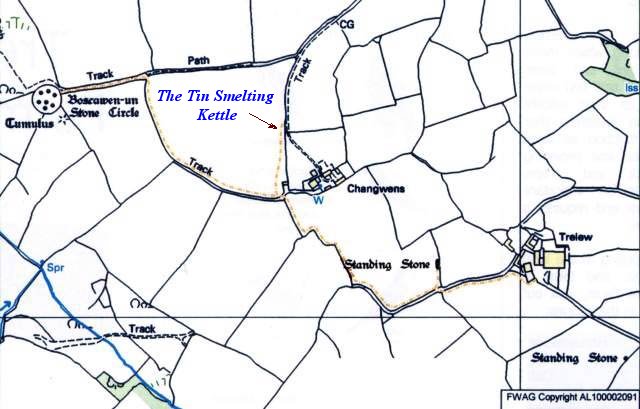

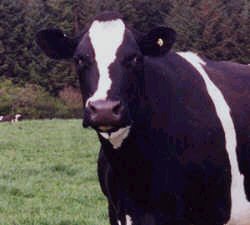 Here
on the Farm John has a dairy herd of 170 Holstein Friesian cows which
are black and white in colour, they are milked twice a day from 5.00 am
and again at 3.30pm in the afternoon and you are welcome to come and watch
the milking. They are out grassing all summer and housed in the winter
and fed grass silage which is cut in the summer months and also maize
and whole crop wheat. The cows calve in the autumn and the calves are
reared on the farm as replacements for the dairy herd.
Here
on the Farm John has a dairy herd of 170 Holstein Friesian cows which
are black and white in colour, they are milked twice a day from 5.00 am
and again at 3.30pm in the afternoon and you are welcome to come and watch
the milking. They are out grassing all summer and housed in the winter
and fed grass silage which is cut in the summer months and also maize
and whole crop wheat. The cows calve in the autumn and the calves are
reared on the farm as replacements for the dairy herd.
Cauliflower is also grown, planted in July and cut throughout the winter months for the Supermarkets around the country.
We have some chickens and a dog a West Highland terrier called Sally, also two horses Bay and Taylor, Storm and Murray Mint the ponies.

 Trelew
Farm. St. Buryan, Penzance Cornwall TR19 6ED
Trelew
Farm. St. Buryan, Penzance Cornwall TR19 6ED 
